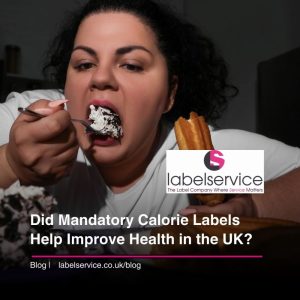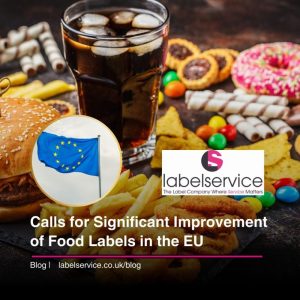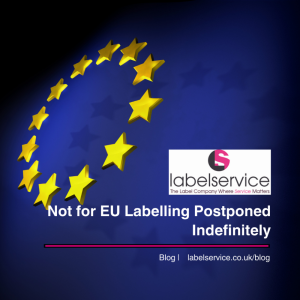Keeping Canadians healthy is one of the Government of Canada’s top priorities. Having clear and easy to access information on the foods Canadians find in their grocery stores is an important part of that. The Honourable Jean-Yves Duclos, Minister of Health, announced new nutrition labelling regulations for packaged foods to help Canadians make informed food choices. These regulations will require a new symbol to be displayed on the front of packaged foods that are high in saturated fat, sugars and/or sodium. Manufacturers have until January 1, 2026, to change their labels and comply with the new requirement.
The new nutrition symbol includes a magnifying glass and text to draw attention to important information Canadians should consider as they are buying groceries. The symbol will complement the Nutrition Facts table displayed on the back of food packages.
Front-of-package nutrition labelling is widely recognized by scientists and health organizations, including the World Health Organization, as an effective tool to help individuals make informed choices. Research shows that a simple, clear symbol on the front of food packages will help consumers choose foods lower in saturated fat, sugars and/or sodium.
Front-of-package nutrition labelling is a key part of Health Canada’s Healthy Eating Strategy, which aims to improve the food environment in Canada, make it easier for Canadians to make informed food choices, and lower the risk of diet-related chronic diseases. Other components of the Strategy include the updated Nutrition Facts table and Canada’s food guide, which offers recipe ideas, tips for healthy eating, and healthy eating resources.
Does the New Policy Make Sense?
Health Canada is likely going forward with a policy requiring front-of-package nutrition symbols on foods high in saturated fat, sugars and sodium. It will provide clear, easy-to-read labels. But one part of Health Canada’s plan is a head-scratcher. The threshold that Health Canada intends to apply is quite simple. For prepared or processed foods and those intended solely for children one to four years of age, it’s 15 per cent of daily values (DV). This means that if a product’s serving exceeds 15 per cent of the maximum daily allowance for saturated fat, sugar or sodium, a label will be prominently placed on the package for consumers to see right away. For pre-packaged meals and dishes, the threshold is 30 per cent.
The policy appears to make sense. It’s hard to argue against more clarity, more transparency and, as a result, better consumer health. But things get murky when we start looking at the list of exemptions. Many products will be exempt from this policy. For example, products at a farmers’ market, products not sold directly to consumers, non-processed raw single-ingredient meat and fish products, all dairy products, and eggs. The list includes technical, practical and health-related exemptions, with 16 categories in total.
What’s surprising is that ground beef and pork aren’t exempt. This means that, in a few months, ground beef and pork, two unprocessed, natural and affordable animal protein sources that many consumers eat daily, will be labelled as having too much saturated fat. Meanwhile, dairy products, which arguably contain at least as much saturated fat, are exempt.
Some sources believe the incredibly powerful dairy lobby provided enough evidence and scientific data to Health Canada to suggest that saturated fats found in dairy products are different, and healthier. That may be the case, but Health Canada certainly has some explaining to do, considering how it butchered dairy products with the latest food guide, released a few years ago. The policy appears to make sense. It’s hard to argue against more clarity, more transparency and, as a result, better consumer health.
But things get murky when we start looking at the list of exemptions. Many products will be exempt from this policy. For example, products at a farmers’ market, products not sold directly to consumers, non-processed raw single-ingredient meat and fish products, all dairy products, and eggs. The list includes technical, practical and health-related exemptions, with 16 categories in total. What’s surprising is that ground beef and pork aren’t exempt. This means that, in a few months, ground beef and pork, two unprocessed, natural and affordable animal protein sources that many consumers eat daily, will be labelled as having too much saturated fat. Meanwhile, dairy products, which arguably contain at least as much saturated fat, are exempt.
Beef and pork do exceed thresholds set by Health Canada – when products are raw, not cooked. However, few people will eat these products raw. When cooked, saturated fat levels are normally below the Health Canada threshold. What’s critical here is protein affordability. While retail prices for beef and pork specialty cuts have skyrocketed in recent years, ground beef and pork have been relatively affordable. Almost 50 per cent of beef consumed in Canada is ground beef. Still, Health Canada intends to slap warning labels on these products consumed by more than 90 per cent of Canadians just as our food inflation rate hits about 10 per cent.
Discriminating against these two products despite other exemptions is likely driven by elitist nutritional ideologies fostered by some out-of-touch bureaucrats. It often feels as though the federal government wants to save consumers from themselves. Such a theoretical narrative might go over well in Ottawa, but not so much at the average Canadian kitchen table.
Canadian Cattlemen’s Association
A group representing Canadian ranchers says their industry has been unfairly singled out by proposed new regulations that would require packaged ground beef to be sold with a health warning label. The Canadian Cattlemen’s Association is crying foul over a proposal by Health Canada to introduce mandatory front-of-package nutrition labelling for pre-packaged foods high in sodium, sugar and saturated fat. The goal, according to the Health Canada website, is to provide consumers with quick and easy nutrition information and encourage them to make healthier choices, and also to encourage food manufacturers to make healthier products. The package labels would be applied to most foods that exceed 15 per cent of an adult’s recommended daily intake of sodium, sugar or saturated fat. But some foods that are naturally high in sugar, such as unsweetened fruit, will be exempt from the labelling requirement, while dairy and eggs – though high in saturated fat – will also be exempt.
Dennis Laycraft, executive vice-president of the Canadian Cattlemen’s Association, said his industry can’t understand why its product is being “vilified.” He said Canadians consume approximately half of their calories from nutrient-poor, ultra processed foods, but by contrast, ground beef – while undeniably a source of saturated fat – is also a nutrient-dense protein that contains iron, zinc, and vitamin B12. “We believe there is a very, very compelling case to support an exemption,” Mr. Laycraft said in an interview.
“The whole purpose of this [Health Canada proposal] largely came from a concern about highly processed foods, and foods with a lot of ingredients,” Mr. Laycraft said. “The idea of taking a single-ingredient food product and imposing these types of labels is not being done anywhere else in the world, and it is going to unfairly affect Canada’s farmers and ranchers.”
Front-of-package nutrition labels exist in many countries around the globe. For example, Chile recently introduced a mandatory warning label on foods high in calories, sugars, sodium or saturated fat. Britain has a voluntary “traffic light” system that uses colours (red, amber, green) to convey a ranking for total fat, saturated fat, sugars and salt in a food. But Sylvain Charlebois, director of the Agri-Food Analytics Lab at Dalhousie University, said Health Canada’s approach to the issue is incoherent. Not only does dairy get a pass while ground beef and pork do not, the proposed Health Canada regulations also exempt foods that typically come in small serving sizes such as condiments, some cookies and breakfast cereals, and bite-sized chocolate bars – even though these foods are far more nutritionally suspect than ground beef.
Saskatchewan’s Beef With New Front of Package Labelling
Saskatchewan is one of the three provinces in Canada that is well known for their cattle. It is a vital beginning point of a competitive, well-established supply chain. The front of package nutrition label is calling for packaged beef and pork to show the percent of saturated fat that it contains raw. The problem with this is that no one eats these meats raw, and the percent of saturated fat is greatly reduced after proper cooking.
“Ground beef is a nutrient-dense protein that contributes zinc, iron and vitamin B12 and other essential nutrients that Canadian consumers need in their diets; so, we will be lobbying Health Canada to defeat their proposed labelling regulation that would require ground beef sold at retail to carry a high in saturated fat warning label,” Garner Deobald, President of the Saskatchewan Stock Growers Association said. “The potential trade implications that this labelling could initiate are dangerously incalculable.”
The beef and pork industries are not only important to our economy, they are also part of many Canadian traditions and are embedded in our culinary DNA. As we try to figure out how to lead healthier lifestyles, warning Canadians that these unprocessed food staples are now dangerous to their health doesn’t make sense. Dietary recommendations, like most things, should be applied in moderation.
Manitoba Pushes Back
Cattle farmers in Manitoba and across the country are pushing back against a proposed change to food labels by Health Canada. The government organization is looking at putting labels on foods warning consumers of high amounts of saturated fats, sugars and sodium, a label that currently would also go on beef products. “That’s concerning for ranchers and farmers across Manitoba and across the country because it really does send mixed messages and we fear it’s going to hurt the demand for our product,” said Tyler Fulton, the president of the Manitoba Beef Producers. Fulton said he feels the beef industry provides consumers with a healthy protein option and thinks a label like this would see fewer people spend money on beef products.
Currently, there is no label on beef products and Fulton would like for it to stay that way. “One of the things that confuses the situation is not all single-ingredient products are subject to the rule. For example, butter, milk, those products exempt from (the label). So it makes one question why those products would be exempt and something like ground beef is not.”
Health Canada said exemptions include foods that are already exempt from displaying nutrition tables like raw whole cut meats; there is evidence that the food provides protective health effects; and the information would be redundant. Fulton feels ground beef should fit in that category because it is high in protein, iron and vitamins.
According to Manitoba Beef Producers, cooked extra lean ground beef has 2.5 grams of saturated fat, which is 14 per cent of a person’s daily value, while raw extra-lean has three grams at 17 per cent of the daily value.
Canada will become one of the first countries in the world to have a front-of-package policy targeting single-ingredient products. Many other countries with this type of labelling haven’t required single-ingredient products to have warning labels. At the core of the policy is the intent to help consumers make better, healthier choices at the grocery store, particularly when processed foods are involved. Requiring ground beef and pork to be labelled suggests that the spirit of the policy got lost despite the several meetings Health Canada had with stakeholders.
Health Canada is purposefully aiming at two very important food staples that Canadians have been consuming for centuries. It makes no sense. These products need to be exempt from new front-of-package labelling rules.

















